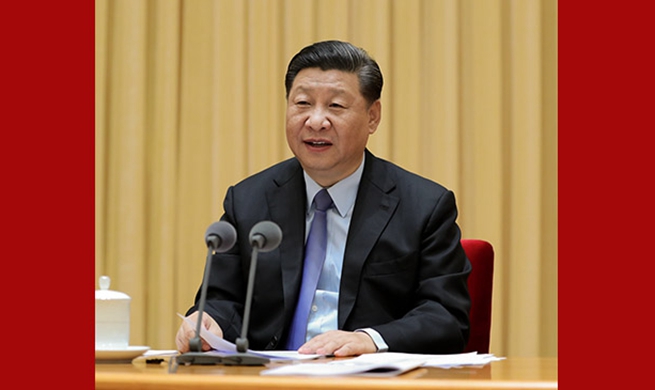WASHINGTON, Sept. 10 (Xinhua) -- Researchers revealed some new knowledge about what happened when we switched between different languages that may offer new insights into the nature of bilingualism.
The study published on Monday in the journal Proceedings of the National Academy of Sciences showed that the neural activity in that process was exclusively associated with disengaging from one language and then engaging with a new one.
"This research unveils for the first time that while disengaging from one language requires some cognitive effort, activating a new language comes relatively cost-free from a neurobiological standpoint," said the paper's senior author Liina Pylkkanen, a professor in New York University (NYU)'s Department of Linguistics and Department of Psychology.
Previous research has linked language switching with increased activity in areas associated with cognitive control in the prefrontal and anterior cingulate cortices. However, it was unknown whether it is disengaging from the previous language or engaging in a new language that drives this activity.
This is largely because these two processes happen simultaneously when participants switch, say, from speaking Spanish to speaking English, turning Spanish "off" and turning English "on" happen at the same time.
The researchers studied bilingual individuals fluent in English and American Sign Language (ASL), who often produce both languages simultaneously.
"The fact that they can do both at the same time offers a unique opportunity to disentangle engagement and disengagement processes, that is, how they turn languages 'on' and 'off'," said the paper's lead author Esti Blanco-Elorrieta, a postdoctoral candidate at NYU.
Therefore, the researchers could ask the participants to go from producing both languages to producing only one, thus isolating the process of turning a language "off", or to switch from producing a single language to producing both, thus isolating the process of turning a language "on."
They used magnetoencephalography and observed bilingual signers/speakers who viewed the same pictures and named them with semantically identical expressions.
The results showed that when bilinguals fluent in ASL and English switched languages, turning a language "off" led to increased activity in cognitive control areas while turning a language "on" was no different than not switching.
In other words, the brain's work was devoted to turning "off" a language, with little to no cognitive effort required in turning "on" a second language--regardless of whether it was spoken or signed language, according to the study.
They also found that for such speakers, producing two words simultaneously (one sign and one spoken word) was not necessarily more cognitively costly than producing only one.
Rather, producing both at the same time was easier than having to suppress the dominant language (in this case English) in order to name the picture on the screen only in ASL.

















